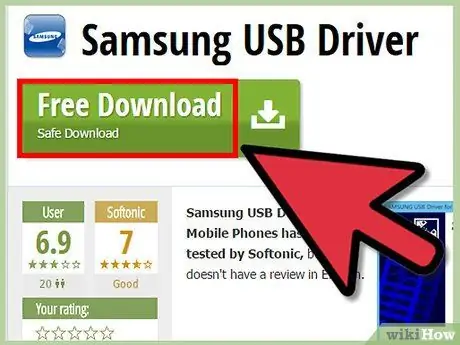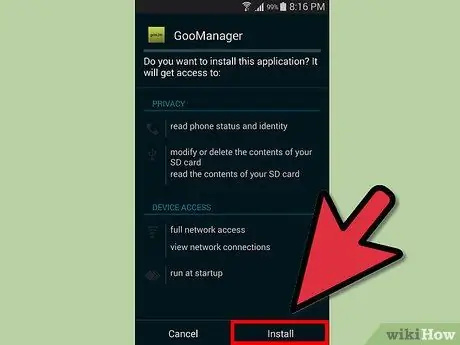- Author Jason Gerald [email protected].
- Public 2023-12-16 10:50.
- Last modified 2025-01-23 12:04.
The best way to customize the appearance and performance of the programs on your device is to install a custom ROM. Custom ROMs will feature a number of new options and improve your experience with Android.
Installing a custom ROM on Android also has its risks. You should read more about the custom ROM and only proceed when you are sure. We are not responsible for any damage that may occur to your device.
Step
Part 1 of 4: Rooting Device

Step 1. Get the root package
Search and download your device specific root package on the internet.

Step 2. Download the USB driver for your device
Do a quick search on the web as manufacturers usually always provide USB drivers.

Step 3. Download Odin
Search and download Odin on the internet. Extract the root and Odin packages into the same folder.

Step 4. Use "Download" mode on your device
You can do this by turning off and holding the power and volume down buttons at the same time.
The order in which the keys are pressed may vary by device, so if the above doesn't work, search the internet for instructions for your device model
Step 5. Plug your device into PC
Once your device is in Download mode, connect it to your PC using the USB cable that usually comes with your Android phone.

Step 6. Run Odin
The message "Added!" will appear. in the Odin message log after you run it.

Step 7. Click on PDA
Select the root file (usually. tar.md5).

Step 8. Click Run
The rooting process will begin. To avoid errors, wait until this process is complete. The device will reboot when finished.
Part 2 of 4: Installing a Custom Recovery Menu

Step 1. Download GooManager
Go to Play store, search for GooManager and then download it to your device.

Step 2. Run GooManager
Find this app on your device and tap on it to open it.

Step 3. Tap Menu and tap Install OpenRecoveryScript
Confirm the instructions that appear, and grant root access to this app. Wait until the download and installation process is complete.

Step 4. Complete the installation
Tap the GooManager menu then tap Reboot Recovery. If the installation is successful, you will be taken to the TWRP Custom Recovery menu.
Part 3 of 4: Downloading ROM to Device

Step 1. Open the XDA forums
This is where most of the Android Developer Community submit their work along with the required files.

Step 2. Search the forum for your device
Type the device name and model in the Find your Device search box.

Step 3. Go to the Android Development section
Once you're in your device's subforum, look for a ROM that offers the features you want. Read and download the.zip ROM package from the forums.

Step 4. Put the ROM package into a directory on the device's internal memory
Make sure you remember where you put the package.
Part 4 of 4: Installing a Custom ROM

Step 1. Reboot the device into Recovery mode using GooManager
This is the easiest way to reboot the device into Recovery.
Step 2. Create a Nandroid Backup in TWRP
Do this by tapping Backup in the recovery menu. This step will create a complete backup of your Android system so you can restore it if something goes wrong.
You can name the backup file
Step 3. Go back to the main menu then tap Install
Do this after you finish backing up your system.
Step 4. Locate the ROM file
zip that has been downloaded.You can search for it in the directory panel. Tap the file and swipe the slider to start the installation.
Follow the on-screen instructions if your ROM package displays it
Step 5. Wait for the package installation to complete
Clear cache, then restart your system.






